Armored vehicles of Germany in the Second World War. Jagdtiger tank destroyer (Sd Kfz 186)
Experimental design work on heavy self-propelled artillery mounts have been conducted in Germany since the 1940s. These works had local successes. In the summer of 1942, two 128-mm self-propelled guns based on VK 3001 (H) were sent at Stalingrad to the Eastern Front. One of these vehicles was lost in battle, the other along with the remaining equipment. The five hundred and twenty-first battalion of tank destroyers was abandoned at the start of 1943 after the defeat of the German grouping near Stalingrad.
Photo on the right in the assembly workshop prototype "Yagdtigra" with the chassis construction company "Henschel", borrowed from the "Royal Tiger". Clearly visible holes in the side of the case, designed to install torsion shafts. Autumn 1943 of the year.
However, even the death of Paulus's Sixth Army did not affect the launch of the self-propelled gun data in the series. In ruling circles and society, ideas prevailed that for Germany the war would end in victory. Only after defeats in North Africa on the Kursk Bulge and the landing of Allied troops in Italy, many, blinded by propaganda, did the Germans realize the reality - the forces of the anti-Hitler coalition were significantly superior to those of Japan and Germany, and only the “miracle” could save the German state on the verge of death.
At the same time, there was talk of creating a “miracleweapons, Which will change the course of the war. Such rumors were officially propagated by the country's leadership, which promised the German people a quick change of the situation on all fronts. At the same time, there were no effective developments globally (for example, nuclear weapons, as well as their analogues) in Germany at the final stage of readiness. In this regard, the leadership of the Reich grabbed at any significant military-technical projects that, with their unusualness and originality, together with their defensive capabilities, perform psychological functions, that is, inspire people to think about the power and strength of a state capable of creating such a complex technique. It was in this situation that the heavy tank destroyer Jagdtiger was created and launched into the series. Jagdtigr became the heaviest production model of armored vehicles of the Second World War.
New self-propelled gun was classified as 128-millimeter heavy assault gun. Its main weapon was to be a PaK 44 gun of the 128 mm caliber, created on the basis of the Flak 40 anti-aircraft gun. The high-explosive fragmentation projectile of this gun had a greater high-explosive effect, as compared with a similar anti-aircraft gun. A wooden model of the future self-propelled artillery mount presented to Hitler 20.10.1943 in East Prussia at the Aris range. “Jagdtigr” on the Fuhrer made a favorable impression, after which he gave the order to start its mass production in 1944.
Description of construction
The overall layout of the self-propelled artillery Jagdtiger generally repeated the "Royal Tiger". This increased the load on the chassis during the shot, in connection with which the chassis was extended by 260 millimeters. Office control was located in front of the self-propelled gun. Here were the turning mechanism, the main clutch and gearbox. Place the driver, respectively, the dashboard and controls were to her left. To the right in the case was placed the seat of the gunner-radio operator and course machine gun. Here was a radio station above the right-hand side transmission and gearbox.
In the case "Jagdtigr" used six types of armor plates 40 thickness - 150 millimeters. The thickness of the upper frontal hull sheet was 150 millimeters, it was solid. It was made only one embrasure to install a machine gun course. In the upper part was made specials. cutout, providing the driver a better view of self-propelled guns. In addition, in the front part of the hull, there were landing hatches for the driver and the radio operator.
In the middle of the self-propelled gun station was located. Here was an armored armchair with a weapon. The gunner's seat, periscopic sight and guidance mechanisms were to the left of the gun. To the right of the gun was the seat of the commander. On the walls of the cabin and the floor of the fighting compartment was located ammunition to the gun. In the wheelhouse in the back there were two places for loaders.
The engine compartment, which is located in the rear of the hull, housed a propulsion system, fans, radiators of the cooling system, and fuel tanks. The motor compartment was separated from the fighting compartment. On the “Jagdtigre” was installed the same engine as on the PzKpfw VI “Tiger II” - carburetor “Maybach” HL230Р30, V shaped, 12 cylinder (camber 60 degrees). Maximum power at 3 thousand rpm was 700 HP (the number of revolutions in practice did not exceed 2,5 thousand rpm).
It should be noted that the armor hull "Jagdtigr" in terms of design and booking is almost unchanged. The logging boards were one with the hull sides, having the same thickness of armor - 80 millimeters. The side armor plates were installed under an inclination of 25 degrees. The stern and frontal cuts were joined together in a “thorn”, amplified with keys and scalded. Frontal logging had a thickness of 250 millimeters and was set at an angle of 15 degrees. None of the means of fighting allied forces' tanks from a distance of more than 400 meters could penetrate the Jagdtiger self-propelled gun into the forehead. The stern leaf of the cabin had a thickness of 80 millimeters. In the stern sheet there was a hatch for evacuating the crew, dismantling the gun and loading the ammunition. The hatch was closed with a double hinged lid.
The cabin roof was made of 40-mm armor plate and fastened with bolts to the body. To the right in front was a commander rotating turret, equipped with a viewing device, which was covered by an armored U-shaped brace. In the roof of the cabin in front of the turret there was a flap that serves to install a stereo pipe. The hatch for landing and disembarking the commander was behind the commander’s turret, and to the left of the hatch is a periscope sight. In addition, a melee device, a fan, and a 4 surveillance device were installed here.
In the embrasure of the frontal armor plate cutting, covered with a cast massive mask, mounted gun StuK 44 (Pak 80) caliber 128 millimeters. The armor-piercing projectile of this tool had an initial speed of 920 m / s. The length of the gun was 7020 millimeters (55 gauges). Gross weight - 7 thousand kg. The gun had a horizontal, wedge slide, which was automated at ¼. The opening of the shutter, the extraction of the liner was carried out by the gunner, and after the discharging of the charge and the projectile the shutter was closed automatically.
The gun was mounted on a special machine installed in the body of the self-propelled unit. Vertical pickup angles -7 ... + 15 degrees, horizontal pointing angle to each side - 10 degrees. The recoil devices were located above the gun barrel. The rollback length was 900 millimeters. The greatest range of high-explosive fragmentation projectile fire - 12,5 thousand meters. The StuK 44 cannon from the Flak 40 cannon was distinguished by separate sleeve loading. In the close felling of self-propelled guns with unitary ammunition of large volume would simply not turn around. To speed up the loading process, the Jagdtiger crew had two loaders. While one loader was sending the projectile to the cannon of the gun, the second one served the sleeve. Despite the presence of 2 charging, the rate of fire did not exceed the 3 shot per minute. The gun ammunition included 40 shots.
The WZF 2 / 1 periscope sight used on the self-propelled mount had a tenfold increase and the field of view was 7 degrees. This sight allowed to hit targets at a range of 4 thousand.
Auxiliary armament "Yagdtigra" - MG 34 course gun, located in the front hull sheet in a ball special. installation. Ammunition machine gun was 1,5 thousand rounds. Additionally, a melee weapon was mounted on the cabin roof - a special 92-mm anti-personnel grenade launcher. On machines later release on the roof of the cabin also installed specials. bracket to install the MG 42 machine gun.
Epic with suspension
Building a self-propelled self-propelled unit Jagdtiger (like the Tiger II tank) was the most time-consuming operation, significantly delaying the production process of machines. That is why the F. Porsche KB as a private initiative made a proposal to use a suspension on this self-propelled gun, similar to the one installed on the anti-tank self-propelled gun Ferdinand.
A feature of this suspension was that its torsion bars were installed inside special carts outside the hull, and not inside the hull. Each such longitudinally located torsion bar serviced the 2 track rollers. When using this suspension, the mass was reduced by 2680 kg. In addition, the installation and twisting torsion suspension from the company Henschel carried out only in the assembled case, in a certain sequence when using specials. winches The replacement of torsions and balancers of the suspension could only be carried out in factory conditions. At the same time, the assembly of the Porsche suspension could be performed separately from the body, and the installation was carried out without the use of special equipment. Replacement and repair of suspension assemblies were carried out in front-line conditions and did not cause any particular difficulties.
A total of seven Porsche cars (prototype 2 and 5 production models) were manufactured; the first Jagdtigr, having this suspension, was tested earlier than the self-propelled Henschel suspension. However, despite the advantages of the Porsche suspension, a completely different machine went into the series on the recommendation of the Arms Administration. The main reason was the strained relations between the ministry officials and the famous designer, as well as the breakdown during the tests of one of the carts. It should be noted that this failure occurred through the fault of the manufacturer. It is impossible to disregard the fact that the Arms Directorate wanted to achieve maximum unification between the Royal Tiger tank and SAU.
As a result, the chassis of the serial "Yagdtigra" included 9 dual all-metal road wheels, which had internal depreciation (from each side). The rollers were staggered (4 in the inner row and 5 in the outer). The size of the rollers is 800 x95 millimeters. Their suspension was individual torsion. The balancers of the rear and front rollers were equipped with hydraulic shock absorbers inside the case.
A total of similar self-propelled guns were assembled in Germany in the period from July to April 1945 70-79, in connection with this, there was no question of any massive use of Jagdtiger. The “Yagdtigr” self-propelled guns most often joined the battle in platoon form or individually as a part of hastily formed groups. Too overloaded vehicle chassis caused frequent breakdowns and low mobility. In this regard, in the construction of self-propelled guns provided for the installation of a pair of stationary explosive charges. The first was located under the engine, the second under the breech of the gun. Most of the self-propelled guns destroyed by their own crews because of the inability to tow the car for repair. The use of the Jagdigres was sporadic, but any appearance of these vehicles in battle was a major headache for the Allied forces. The gun, installed on the ACS, made it possible to easily hit any of the Allied tanks from a distance of 2,5 thousand.
Tactical and technical characteristics of anti-tank SAU Jagdtiger:
Weight - 75,2 thousand kg;
Dimensions:
length - 10654 mm;
width - 3625 mm;
height - 2945 mm;
Crew - 6 man;
Reservations - 40 - 250 mm;
Armament:
gun StuK44 L / 55, caliber 128 mm;
MG-34 machine gun caliber 7,92 mm;
Ammunition: 1500 cartridges and 40 shells;
Engine: “Maybach” HL HL230P30, petrol, 12-cylinder, liquid cooling, power 700 hp;
Maximum travel speed:
cross country - 17 km / h;
on the highway - 36 km / h;
Power reserve:
cross country - 120 km;
on the highway - 170 km.
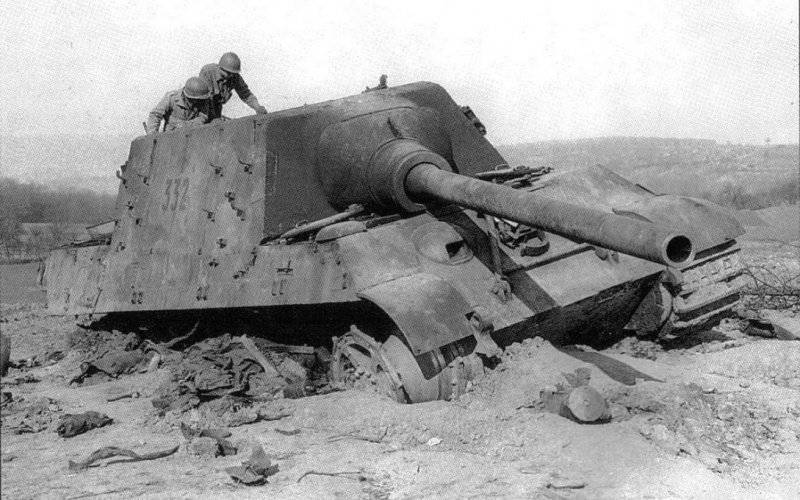
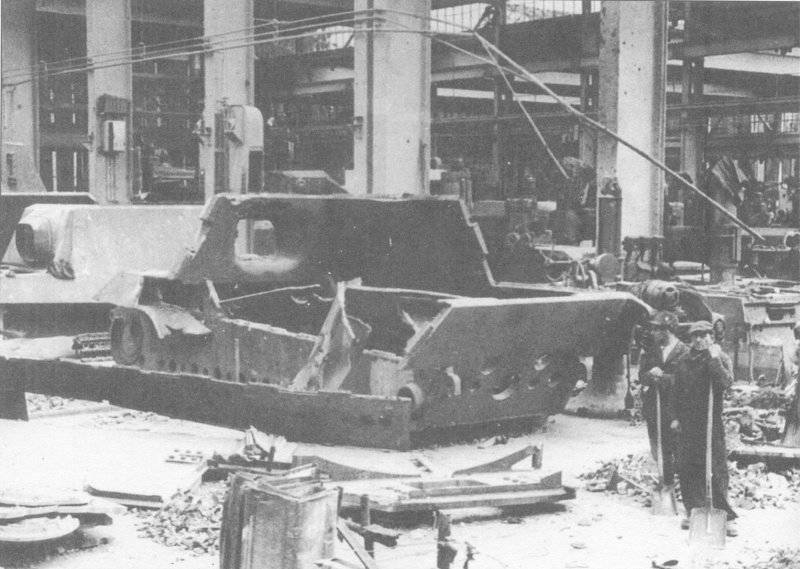
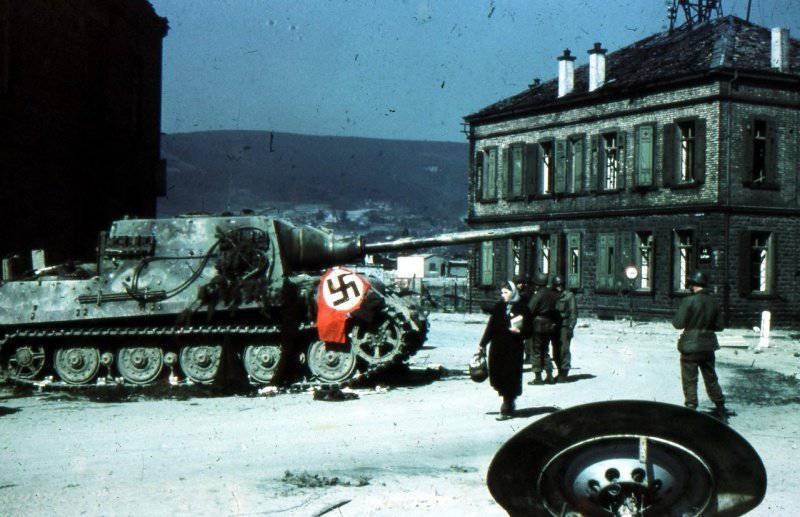
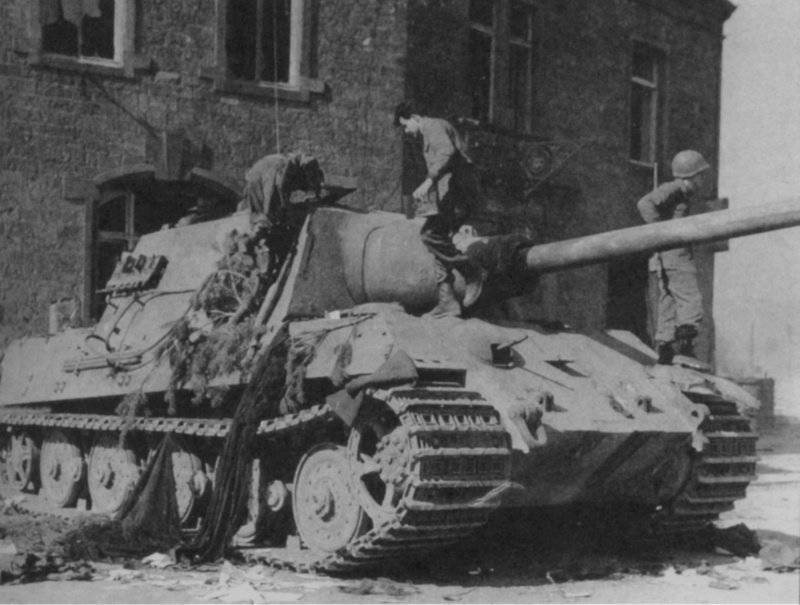
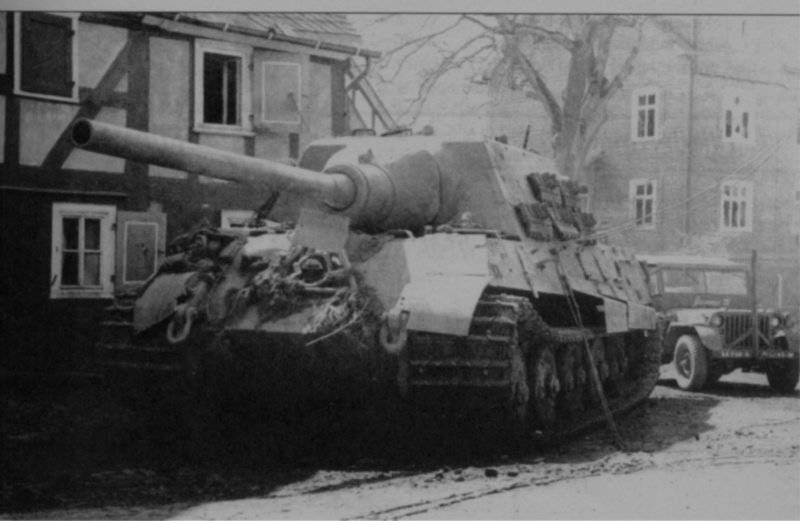
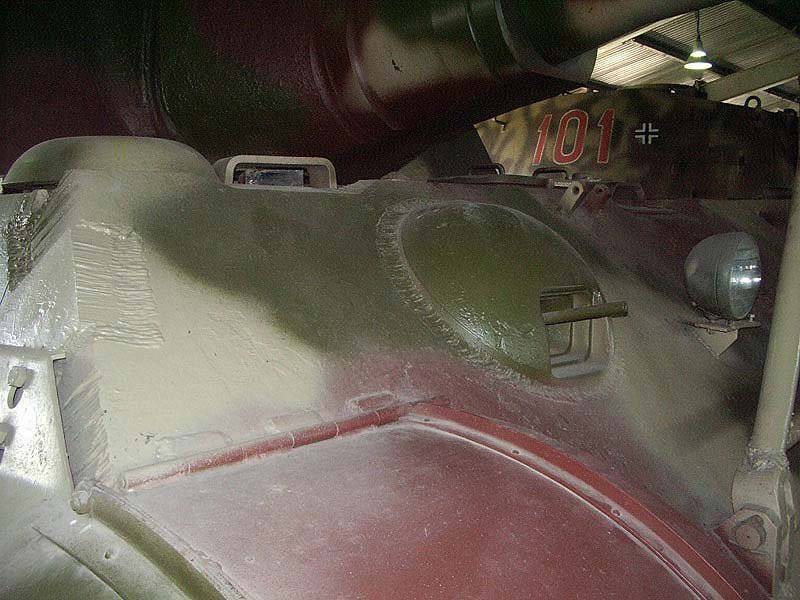
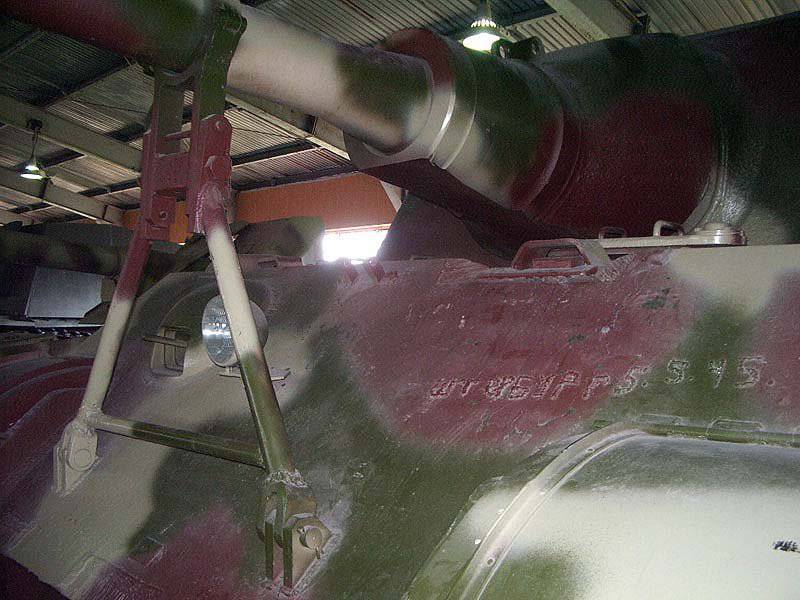
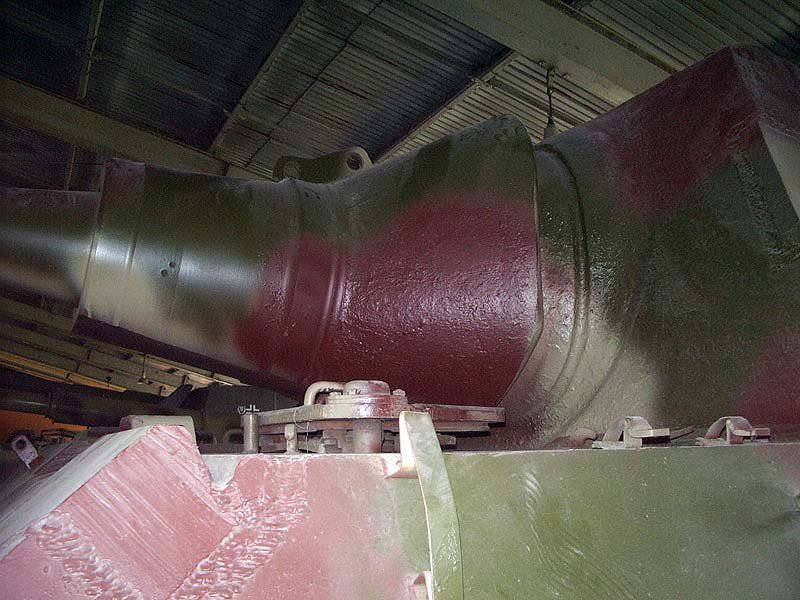
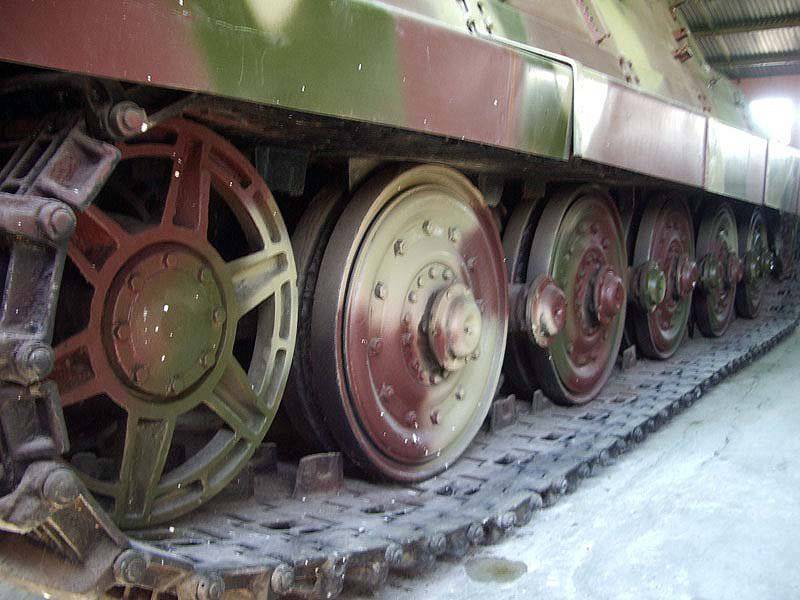
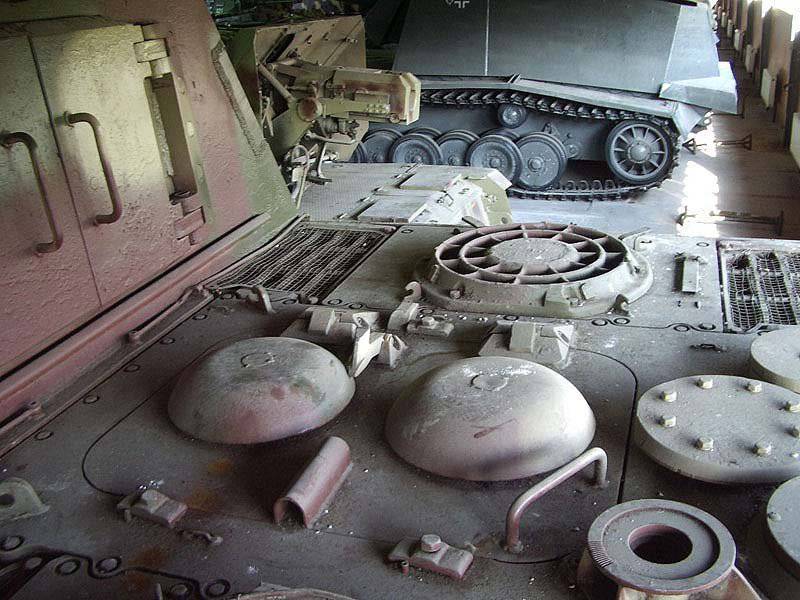
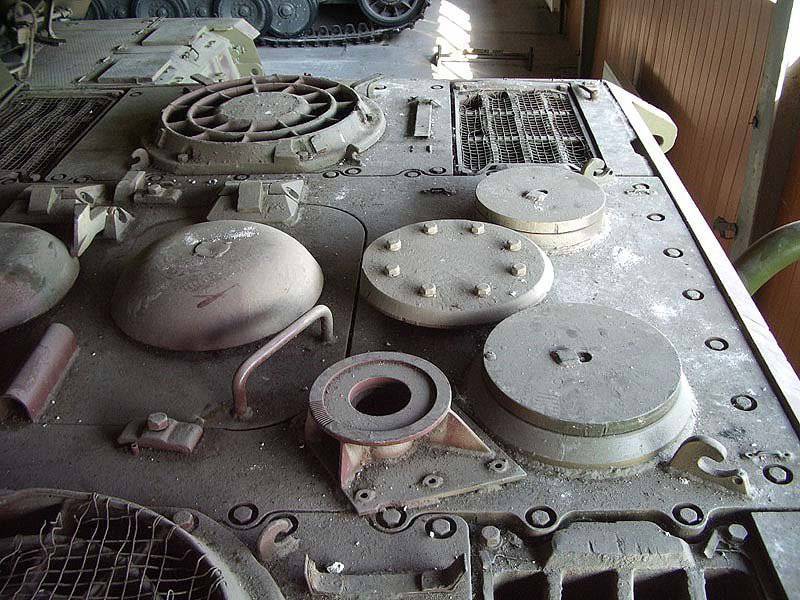
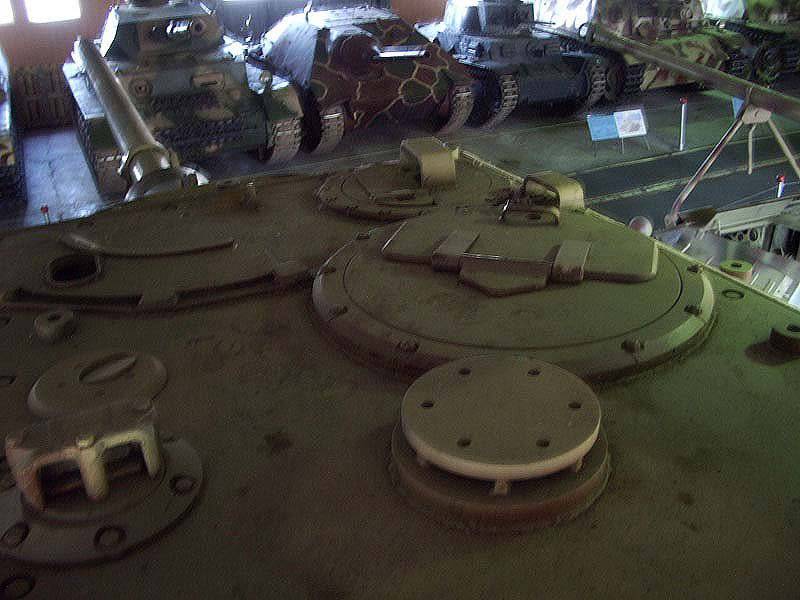
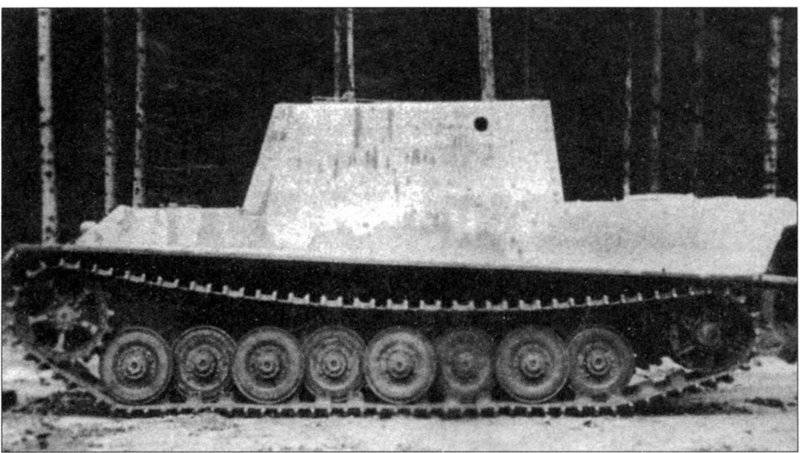
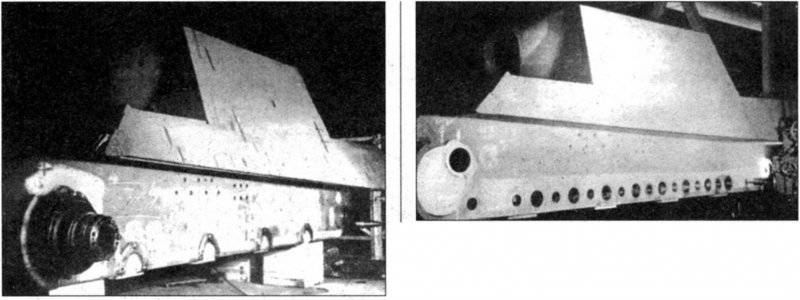
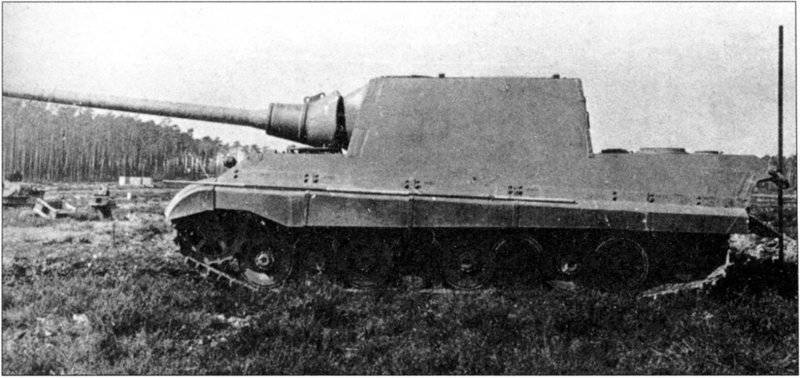
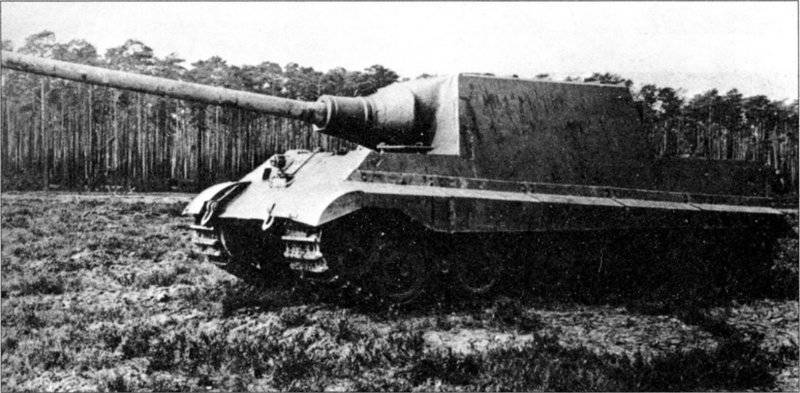
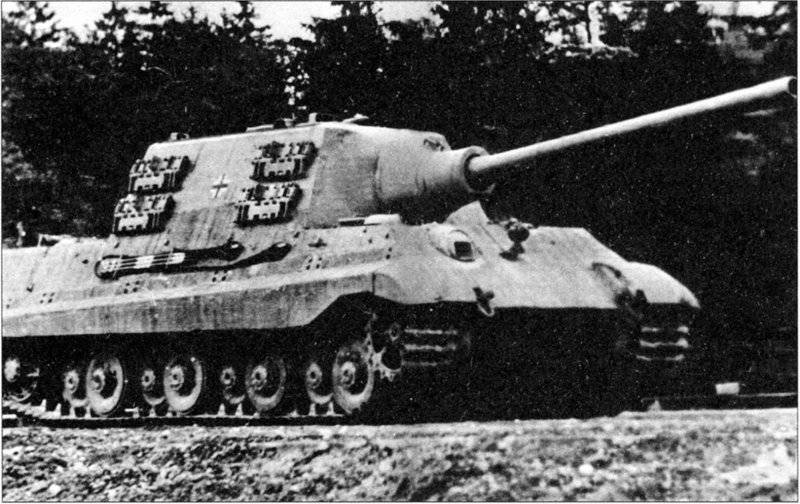
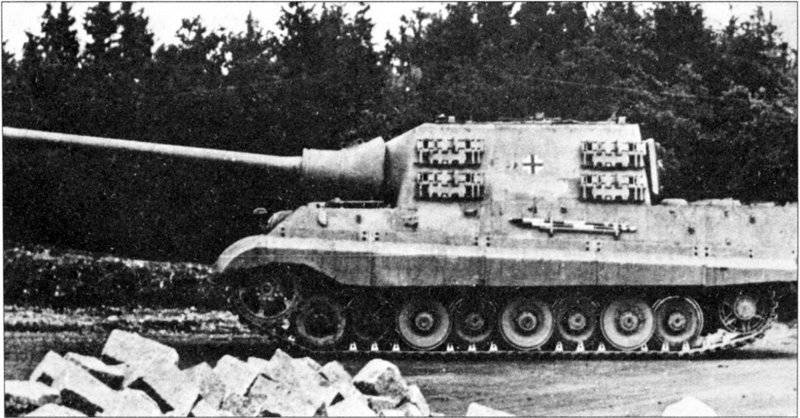
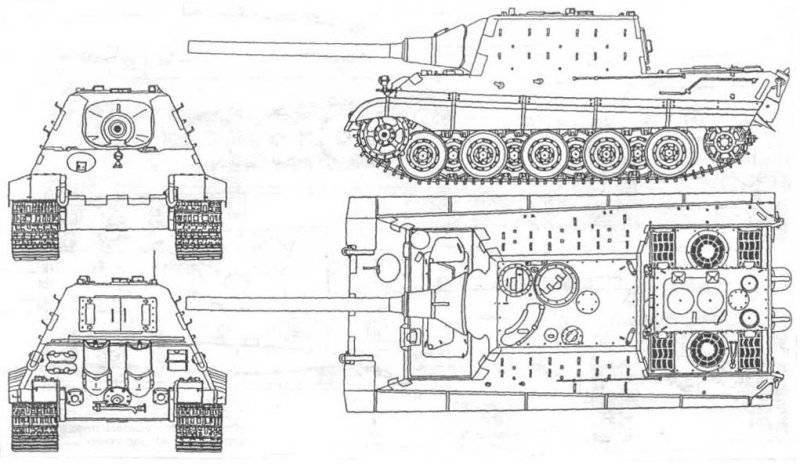
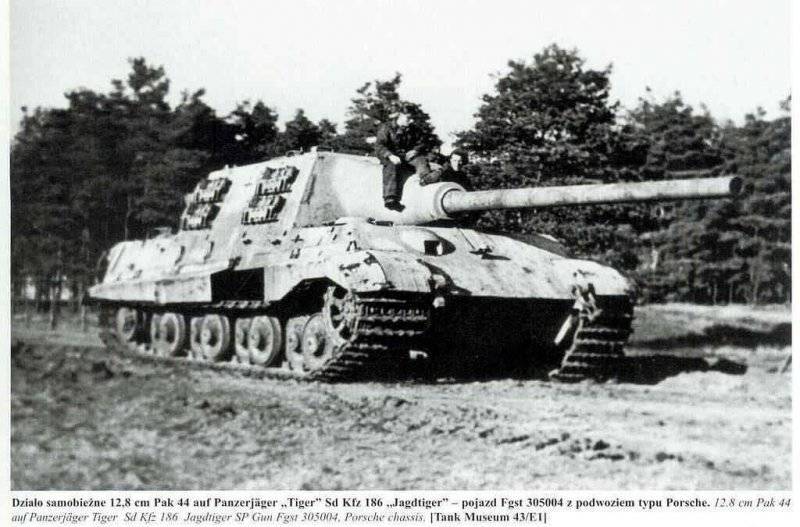
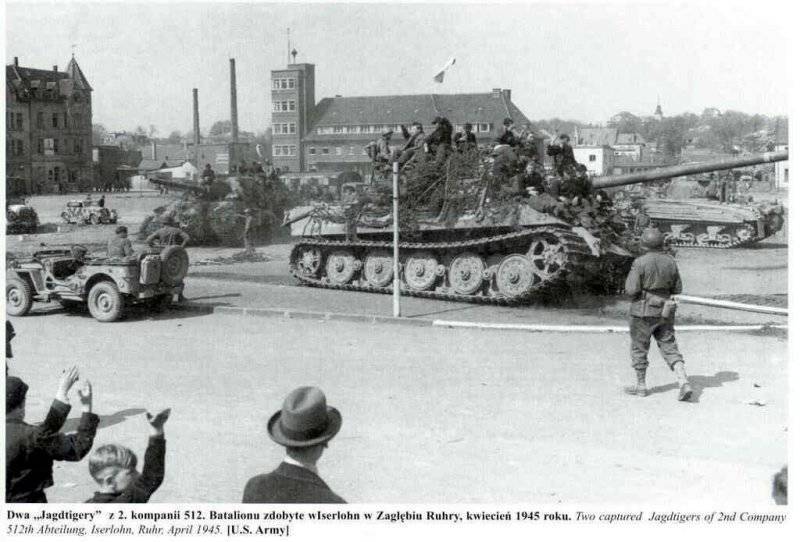
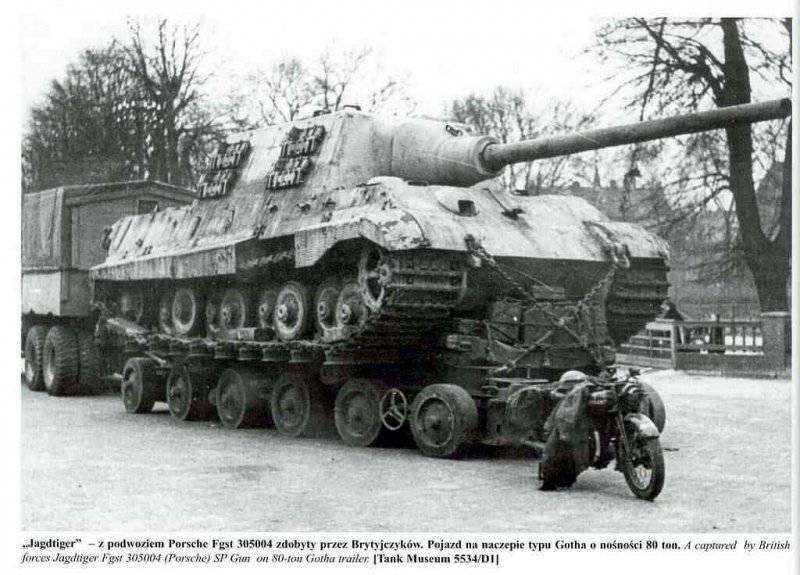
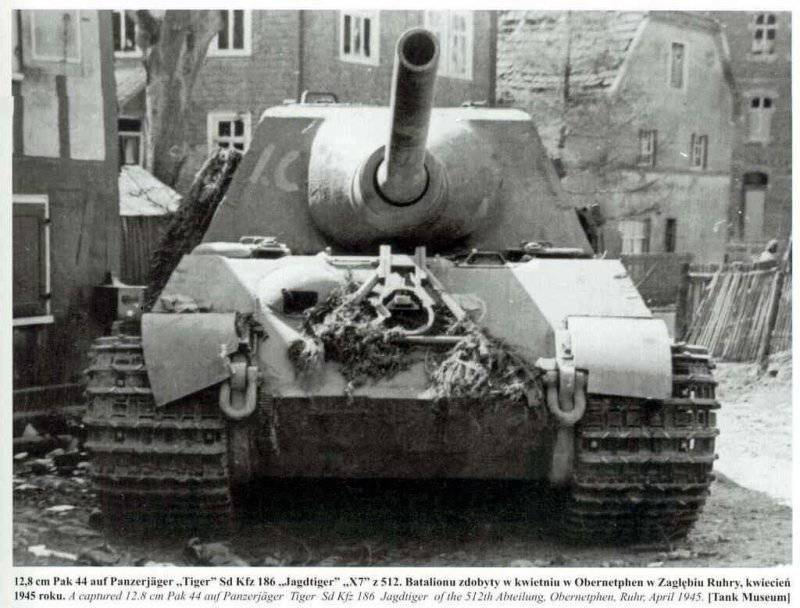
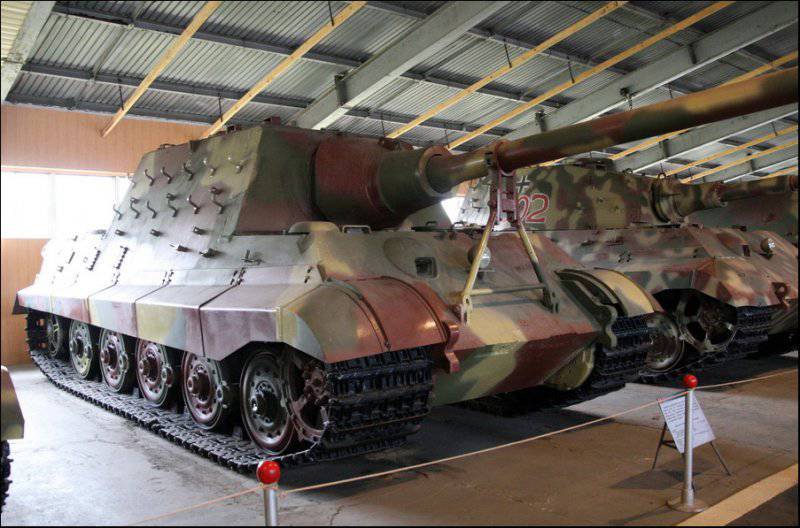
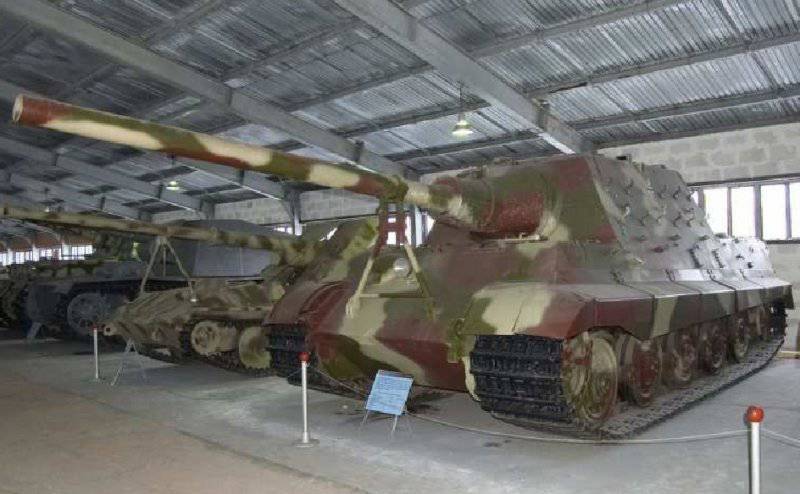
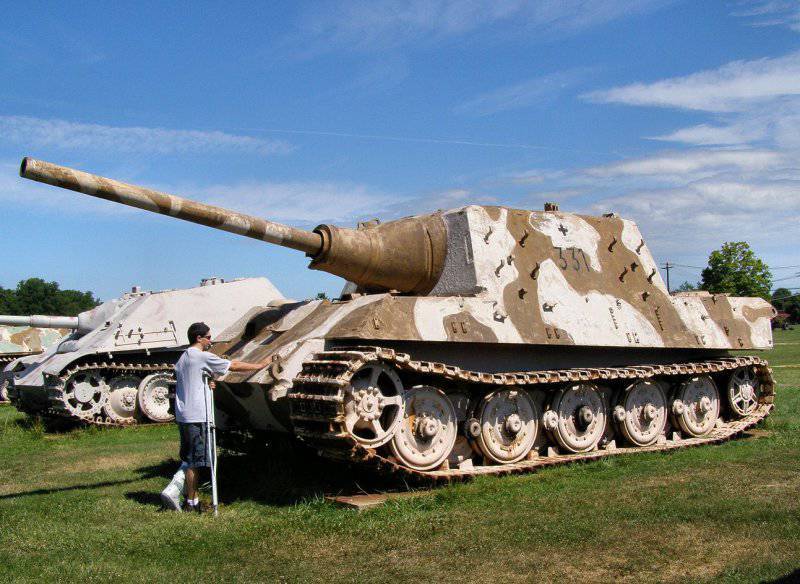
Information